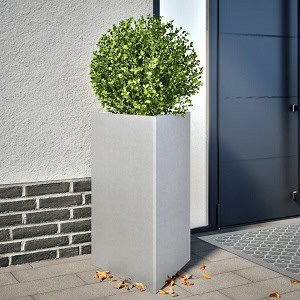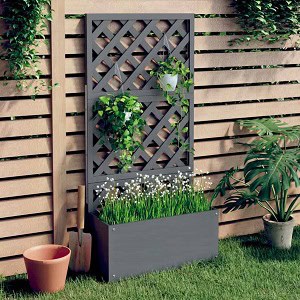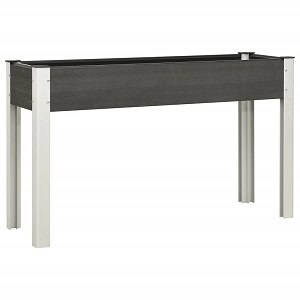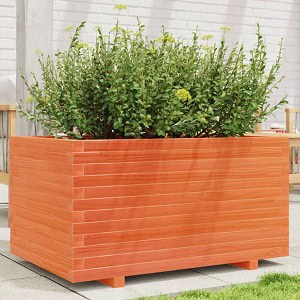Planter boxes are now an integral part of the urban landscape, from city balconies to public squares. Their versatile history reflects the evolving relationship between people, nature, architecture, and technology. This page offers a chronological overview of the development of the planter box through the centuries. In its simplest form, the planter box—a container for growing plants has a long history that dates back to early civilizations. Over time, it has evolved from a purely functional item into an aesthetic and architectural feature in gardens, homes, and urban environments.
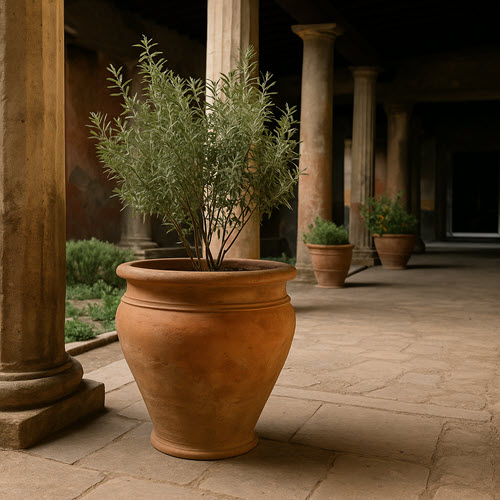
Antiquity: The origins of the planter box
The use of pots and containers for cultivating plants originates from ancient Egypt and Mesopotamia, where clay pots were used to grow plants in palace gardens and courtyards. In ancient Rome, terracotta pots were commonly used to cultivate herbs, flowers, and ornamental plants indoors and in atriums. The Romans even developed drainage and irrigation systems within these pots, demonstrating a sophisticated approach to plant care in containers.
These early planter boxes were not only functional but also carried symbolic and aesthetic meaning. In Egypt, pots were often decorated with motifs or hieroglyphs representing fertility and renewal, while in Roman households, the presence of potted plants signified status and refinement. Their symmetrical placement along colonnades or within courtyards illustrated how people sought to order and integrate nature into daily life.
Middle ages to renaissance
During the Middle Ages, planter boxes were mostly limited to monastic gardens and the estates of the wealthy. They were primarily used for growing medicinal herbs and kitchen plants. The Renaissance brought a renewed interest in art, nature, and symmetry, which was reflected in garden architecture. Planter boxes, often made from natural stone or wood, were used in formal gardens.
In monastic settings, planter boxes were part of enclosed herb gardens designed not only for utility but also for spiritual reflection—the garden symbolizing divine order and creation. With the rediscovery of classical ideals during the Renaissance, geometric garden designs became popular, with planter boxes used as movable elements to enhance symmetry and perspective. Their placement was deliberately chosen to emphasize sightlines to fountains, sculptures, or architectural features.
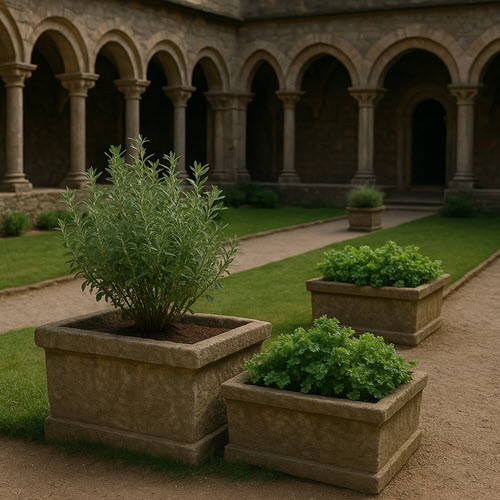
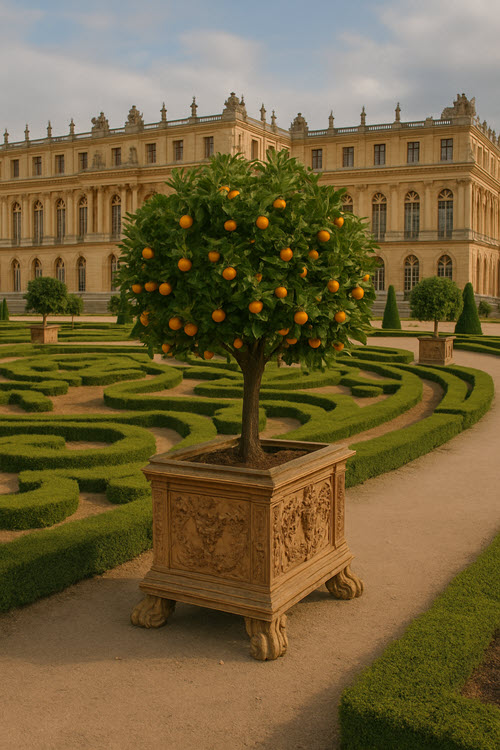
Baroque and classical period: Decoration and status symbol
In the 17th and 18th centuries, the planter box became a prominent decorative element in palace gardens such as those at Versailles. Large, ornately designed containers—often made from wrought iron or carved wood—were used to display exotic plants like orange trees. These orangeries and movable planters allowed royalty and nobility to protect and showcase their botanical collections year-round.
Planter boxes in this era were not just functional but also symbols of wealth and power. Their decorations—such as gilded trim, family crests, or mythological figures—reflected the lavish Baroque style. Ingenious designs, including wheels, allowed planters to be moved indoors for winter and returned outdoors in summer, making them part of courtly protocol and garden etiquette.
The cachepot: Elegance and symbolism indoors
In parallel with the rise of indoor plant cultivation during the 18th and 19th centuries, a specific type of decorative planter emerged in France: the cachepot. Derived from the French word cacher, meaning "to hide," the cachepot was designed to conceal the less attractive utilitarian flowerpot within a more refined outer vessel. Unlike traditional planter boxes, cachepots were primarily intended for indoor use and had no drainage holes, making them ideal for protecting furniture from moisture while elevating interior aesthetics.
Cachepots came in a wide range of materials ceramic, glass, tin, iron, and later even cement and were often richly decorated to reflect the style of their era. Some featured neoclassical motifs, while others embraced rustic or industrial finishes in later centuries. One notable example is the lilac, white, and green jasperware cachepot with saucer made between 1785 and 1790 by William Adams & Sons, which exemplifies the refined craftsmanship of the time.
These vessels were not merely functional; they carried a symbolic weight as markers of sophistication and cultivated taste. In aristocratic and bourgeois homes, cachepots displayed exotic plants such as ferns or miniature citrus trees living symbols of knowledge, global exploration, and affluence. A pair of 19th-century Meissen porcelain cachepots, for instance, would have been at home in the salons of Europe’s cultural elite.
Even in modern history, the cachepot retained its prestige. During his presidency, Bill Clinton offered sterling silver cachepots custom-designed by Tiffany & Co. as diplomatic gifts to visiting heads of state, highlighting its enduring association with taste, elegance, and diplomacy.
While planter boxes shaped the outdoor and architectural dimensions of green spaces, the cachepot represents the intimate, decorative, and symbolic role of plants inside the home a reminder that the integration of nature into human spaces is both a practical necessity and an artistic expression.
19th and 20th century: Industrial production and indoor use
With the advent of the Industrial Revolution, the mass production of flowerpots and planter boxes became widespread. Materials such as cast iron, and later zinc and aluminum, were introduced. In Victorian homes, houseplants became a status symbol, often displayed in ornate stands and planters.
The popularity of indoor plants grew alongside the rise of the bourgeois interior, where nature and decoration merged. In Victorian times, the cultivation of exotic plants like ferns, palms, and orchids became a craze, fueled by botanical expeditions and the availability of heated conservatories. Planters were increasingly adapted to match interior décor, with intricately cast iron stands or hand-painted ceramic pots complementing the style of the home. In the 1960s and 70s, plastic gained popularity—not just for its affordability, but also for its versatility in form and color.
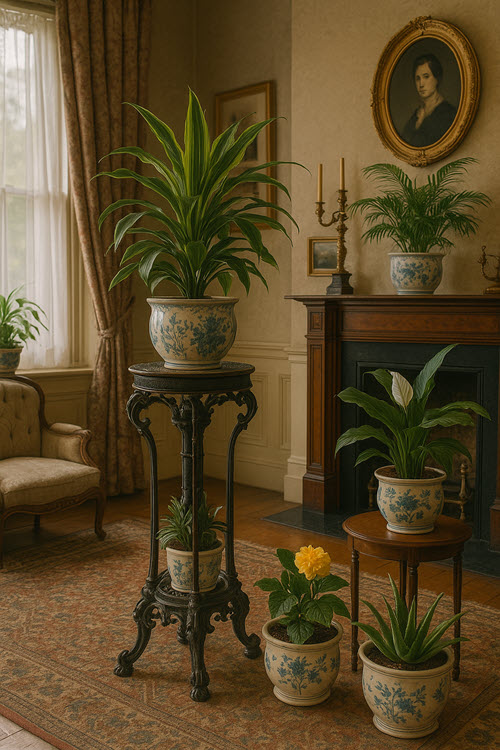
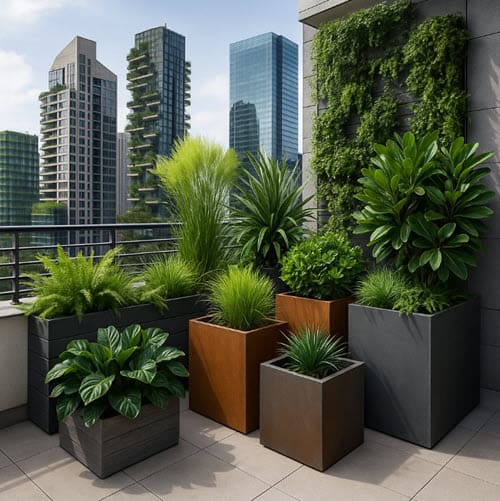
21st century: Sustainability and design
Modern planter boxes combine function with design. Materials such as recycled plastic, Corten steel, and concrete are popular in contemporary garden architecture. At the same time, there is a trend towards green architecture, where planters are integrated into façades, rooftops, and balconies of urban buildings. Vertical gardens and modular planting systems play a key role in climate adaptation, biodiversity, and urban greening.
In interior design, planter boxes are increasingly used as spatial elements to improve ambiance, acoustics, and air quality in both homes and workspaces.
The future of the planter box
As cities around the world strive to become greener, planter boxes will continue to play a central role in sustainability and quality of life. Innovations such as self-watering systems, soil moisture sensors, and fully circular production methods are becoming more accessible. Meanwhile, the aesthetic value of planter boxes remains as relevant as ever, in both private interiors and public spaces. The planter box is not just a product of its time, but a lasting symbol of the bond between humans and nature.
Sources and references
- Taylor, P. (2006). The Garden: A History. Oxford University Press.
- Hobhouse, P. (1992). Plants in Garden History. Pavilion Books.
- Rabinowitz, A. (2013). Gardening Through the Ages. Smithsonian Gardens.
- European Landscape Convention (2000). Council of Europe Publications.
- Online Museum of Garden History (UK)
- Royal Horticultural Society (UK): https://www.rhs.org.uk
- Garden Museum London: https://gardenmuseum.org.uk
- Tuinhistorisch Genootschap Cascade (NL): https://www.cascade1987.nl


